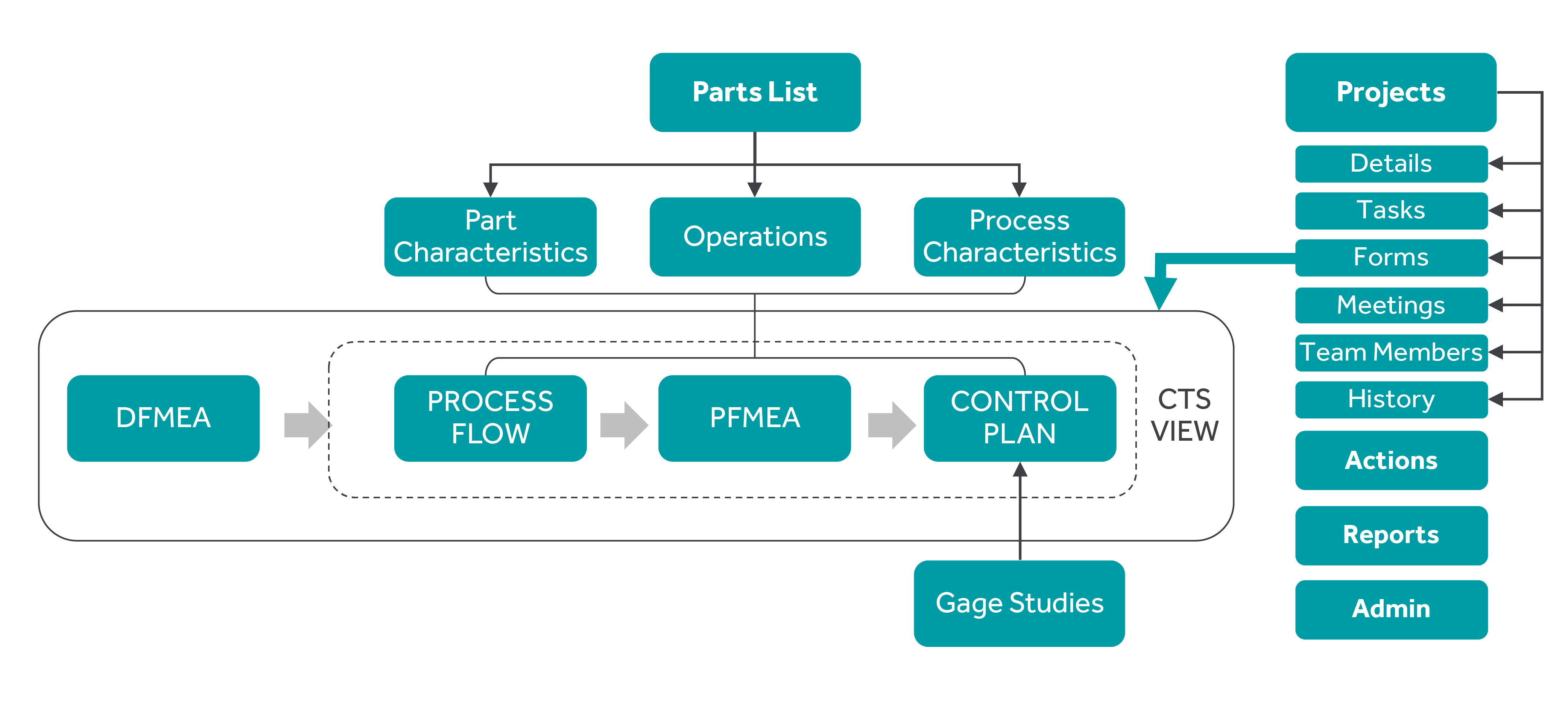-min.jpeg?width=3840&height=1688&name=shutterstock_1926483881%20(1)-min.jpeg)
AS9145 establishes requirements for performing and documenting Advanced Product Quality Planning (APQP) and Production Part Approval Process (PPAP). APQP begins with conceptual product needs and extends through product definition, production planning, product, and process validation (i.e., PPAP), product use, and post-delivery service.
The International Aerospace Quality Group (IAQG) research shows a 40% reduction in production part defects is possible through a robust PPAP program, including the ability to view risk analysis documents during MRB review and provide data riven corrective actions.
Cyient’s PPAP4Aero solution provides the infrastructure to connect over 25,000 suppliers in over 50 countries, with a multilingual application integrated with OEMs and prime aerospace companies. The platform exceeds the highest security standards to meet international regulations around data protection.
PPAP4Aero is a simplified, intuitive solution that makes authoring and managing Process Flows, PFMEA, Control Plans and PPAP submissions easier than ever.
It has been designed by PPAP practitioners who need more than spreadsheets but simpler to collaborate with stakeholders.

The primary benefit of PPAP4Aero is improved production quality of parts and significant
cost savings by way of reduced defects.




Build a knowledge base using PPAP4Aero and dramatically shorten time and improve results to minimize risk.

If your company is having trouble maintaining accurate PPAP data, then it is time to put spreadsheets to rest. Spreadsheets provide limited methods to validate input, and these safeguards can be easily bypassed or ignored. This results in compromised and inaccurate data due to manual errors. Their accuracy completely depends on the users’ skill level and ability to manually identify and correct mistakes. Mistakes usually go unnoticed, and spreadsheets are rarely checked or tested thoroughly before being rolled out.

Most employees who interact with PPAP4Aero only need to know how to fill in a form or click on an icon.

You may have always used a screwdriver as a crowbar or a shim, but it doesn’t make it the best tool for the job. If you’re working on the company financials, use a spreadsheet. If you’re creating a budget, use a spreadsheet. But if you’re maintaining non-numerical data, use a database.

That's how it starts! A year later, they’re still using the same spreadsheet, which has grown to 1,000+ rows and takes ~ 5 minutes to open. When the files get bigger than expected, that's when the process becomes highly inefficient.

How many times has someone opened a spreadsheet in Read Only mode, saved changes to it to their hard drive, and then copied it back over the network copy, eliminating any changes made by another person?

A database stores information more efficiently. Relational databases use tables to segregate data. You’ll have one table for part, customer, suppler information, and another one for the specific forms. Therefore, your database is smaller than your spreadsheet and provides an idea how, over time, your database is more streamlined than your spreadsheet.

Databases with these capabilities are robust are easier to write to and run.

Spreadsheets lack control and security features. Aerospace requires ITAR compliance. Although spreadsheets allow you to protect data with a password and Windows based permissions, it is extremely delicate and requires a deep understanding of spreadsheets. Some of these features won’t work if you have people using different operating systems or if you need relational databases from other computers. Even a password protected spreadsheets file is not secure; there are tools on the Internet that anyone can use to unlock a protected spreadsheets file without knowing the password.
Companies usually start their return on investment (ROI) analysis of any potential venture by looking at two data points - how would it reduce cost, and how would it increase margin? The cost structure of the cloud delivers improvements in several ways - Reduced costs are generated by leveraging resources and technology through the benefit of scale offered by Microsoft Azure. Additionally, lower start-up costs and moving CapEx spending to OpEx help enhance the value proposition. Most importantly, improved data security over spreadsheets needs to be considered by all companies.
Retail: $125/month per concurrent user, paid $1,500 annually
Additional Storage: $120 annually per 50GB
Language: English, Spanish, Chinese
Cyient (Estd: 1991, NSE: CYIENT) is a global engineering and digital technology solutions company. As a Design, Build, and Maintain partner for leading organizations worldwide, we take solution ownership across the value chain to help customers focus on their core, innovate, and stay ahead of the curve. We leverage digital technologies, advanced analytics capabilities, and our domain knowledge and technical expertise to solve complex business problems. We partner with customers to operate as part of their extended team in ways that best suit their organization’s culture and requirements. Our industry focus includes aerospace and defense, healthcare, telecommunications, rail transportation, semiconductor, geospatial, industrial, and energy. For more information, please visit cyient.com
Cyient (Estd: 1991, NSE: CYIENT)delivers Intelligent Engineering solutions for Digital, Autonomous and Sustainable Future
© Cyient 2024. All Rights Reserved.